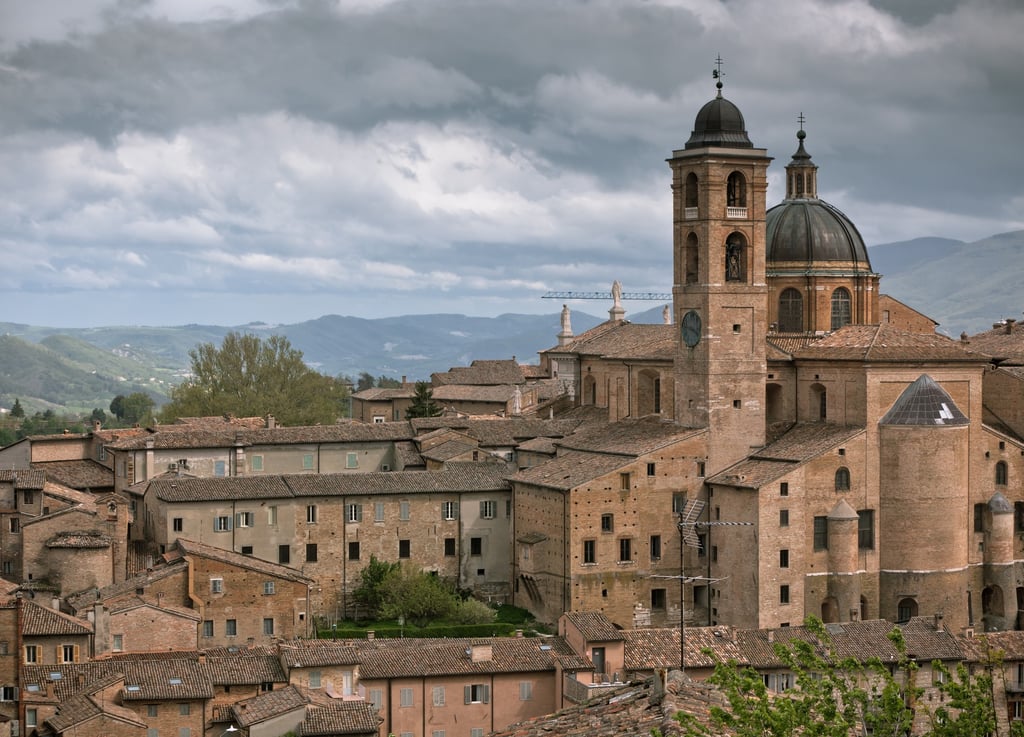Key Facts about Urbino, Italy
Set high in the rolling hills of the Marche region, Urbino is a living Renaissance masterpiece. Once the flourishing court of Duke Federico da Montefeltro, the city still exudes the grace and grandeur of its artistic past. Its skyline, crowned by the majestic Palazzo Ducale, overlooks a maze of terracotta rooftops, narrow lanes, and timeless views. With its connection to Raphael, exquisite art, and serene hilltop setting, Urbino remains a haven for lovers of beauty, history, and Italian culture.
10/6/20252 min read


Location
Urbino is a hilltop town located in the Marche region of central Italy, in the province of Pesaro and Urbino. It lies about 35 km inland from the Adriatic coast and 70 km southwest of Rimini.
Known for
Urbino is celebrated as a Renaissance masterpiece, known for its elegant architecture, artistic heritage, and as the birthplace of Raphael. The town is a UNESCO World Heritage Site and a major center for art, culture, and history.
Best Time to Visit
Spring (April–June): Ideal for sightseeing with mild temperatures and blooming landscapes.
Summer (July–August): Warm and vibrant, perfect for festivals and outdoor dining.
Autumn (September–October): Pleasant climate and fewer tourists.
Winter (December–February): Quiet and atmospheric, great for exploring museums and cozy cafés.
Local Language
Italian. English is spoken in tourist and university areas.
Currency
Euro (€).
Getting There
By air: Nearest airports are Ancona Falconara (90 km) and Bologna (180 km).
By train: Closest station is in Pesaro, with bus connections to Urbino.
By car: About 3 hours from Florence or 2 hours from Bologna via scenic routes through the Apennines.
Top Attractions
Palazzo Ducale: A magnificent Renaissance palace built by Duke Federico da Montefeltro, now home to the National Gallery of the Marche.
Casa Natale di Raffaello: The birthplace of the great artist Raphael, featuring early works and family relics.
Urbino Cathedral: A neoclassical gem with art-filled interiors.
Oratorio di San Giovanni Battista: Known for its frescoes by the Salimbeni brothers.
Albornoz Fortress: Offers sweeping panoramic views of the town and surrounding countryside.
University of Urbino: One of Italy’s oldest universities, founded in 1506.
Local Specialties
Crescia sfogliata: A flaky flatbread often filled with cheese or cured meats.
Formaggio di fossa: A strong, cave-aged cheese typical of the region.
Passatelli in brodo: Egg and breadcrumb pasta served in broth.
Truffles: Especially white truffles from nearby Acqualagna.
Verdicchio and Bianchello wines: Local white wines from the Marche region.
Notable Events
Festa del Duca (August): A Renaissance festival celebrating the city’s golden age with costumes, parades, and music.
Renaissance Christmas Market (December): Medieval crafts and festive food stalls.
Truffle Fairs (Autumn): Celebrating the prized local delicacy.
Cultural Exhibitions: Regular art and history shows at Palazzo Ducale and city galleries.
Contact us
Copyright © 2025. Ralnoscape All rights reserved.
Destinations
Resources


Follow us
This website uses affiliate links which may earn a commission at no additional cost to you
